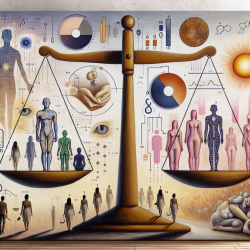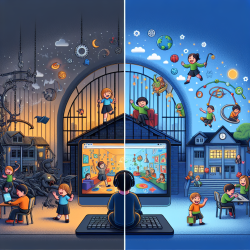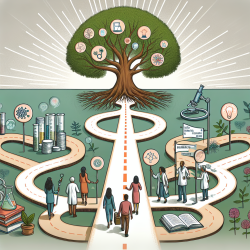Introduction
In the realm of speech-language pathology, the integration of innovative materials and technologies can significantly enhance therapeutic outcomes. Recent research into two-dimensional (2D) photo-catalyst materials, traditionally explored for environmental remediation, offers intriguing possibilities for application in therapeutic settings. This blog explores how these materials can be leveraged to improve speech-language therapy outcomes for children, focusing on data-driven decision-making and evidence-based practices.
Understanding Two-Dimensional Photo-Catalyst Materials
The research article "Recent Progress, Challenges, and Prospects in Two-Dimensional Photo-Catalyst Materials and Environmental Remediation" provides a comprehensive overview of the advancements in 2D materials. These materials are characterized by their unique physicochemical properties, including high surface area, tunable electronic structures, and enhanced catalytic activities. These properties make them ideal candidates for various applications, including environmental remediation and, potentially, therapeutic interventions.
Application in Speech-Language Therapy
While the primary focus of 2D photo-catalysts has been on environmental applications, their properties can be translated into the field of speech-language pathology. The high surface area and tunable electronic properties of these materials can be utilized to create innovative therapeutic tools that enhance sensory feedback and engagement during therapy sessions.
- Enhanced Sensory Feedback: The unique properties of 2D materials can be harnessed to develop devices that provide real-time sensory feedback, aiding in the correction of speech errors and enhancing the learning process.
- Interactive Therapy Tools: By integrating 2D materials into interactive therapy tools, practitioners can offer more engaging and effective therapy sessions, especially for children who may benefit from multisensory learning approaches.
Data-Driven Decision Making
Implementing 2D materials in speech-language therapy aligns with the growing emphasis on data-driven decision-making. By utilizing tools that incorporate these materials, practitioners can gather quantitative data on therapy progress, allowing for more precise adjustments to therapy plans. This approach ensures that interventions are tailored to the specific needs of each child, maximizing therapeutic outcomes.
Encouraging Further Research
While the potential applications of 2D photo-catalyst materials in speech-language therapy are promising, further research is necessary to fully understand their impact. Practitioners are encouraged to collaborate with researchers in material science to explore innovative applications of these materials in therapeutic settings. Such interdisciplinary collaborations can lead to the development of cutting-edge tools that enhance therapy effectiveness.
Conclusion
The integration of two-dimensional photo-catalyst materials into speech-language therapy offers a novel approach to enhancing therapeutic outcomes. By leveraging the unique properties of these materials, practitioners can develop more effective and engaging therapy tools. As we continue to prioritize data-driven decision-making, the exploration of these materials in therapeutic contexts holds great promise for the future of speech-language pathology.
To read the original research paper, please follow this link: Recent Progress, Challenges, and Prospects in Two-Dimensional Photo-Catalyst Materials and Environmental Remediation.










